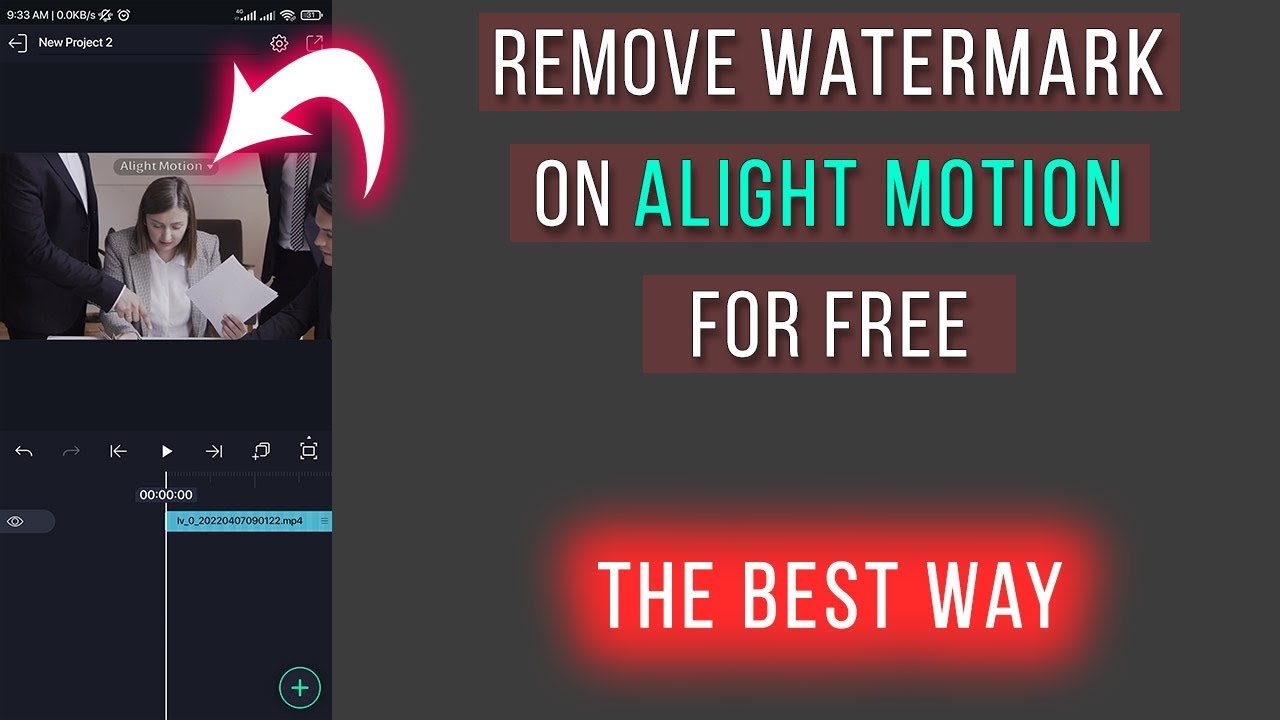Adding an overlay in Alight Motion is simpler than you might think. Open your project, tap the “Add” button, and choose “Overlay.” This feature allows you to layer elements, creating dynamic effects. Whether you’re working on a music video or a social media post, overlays can enhance your content. With a few taps and some creativity, you’ll have a visually engaging piece ready to share. Follow this guide to learn how to add overlay in Alight Motion and make your projects stand out.
Table of Contents
How to Add Overlay in Alight Motion
Adding an overlay in Alight Motion can bring a new level of creativity to your video projects. Overlays are useful for adding effects, graphics, or even other videos onto your main clip, enhancing its visual appeal. Additionally, if you’re wondering how to edit audio in Alight Motion, this guide will cover that as well. Whether you’re a beginner or a seasoned video editor, this guide will walk you through the process of adding overlays in Alight Motion step-by-step. Let’s dive into the world of overlays and explore how you can incorporate them into your videos.
Understanding Overlays
Before jumping into the how-tos, it’s important to understand what an overlay is and how it can be used in video editing.
- Definition: An overlay is an image, animation, or video that is placed over your main video track. It can add visual effects, text, or graphics.
- Purpose: Overlays can enhance storytelling, add visual interest, or emphasize particular parts of your video.
- Types: Overlays can include text, images, other videos, shapes, and animation effects.
Getting Started with Alight Motion
To add an overlay, you first need to have Alight Motion installed on your device. If you haven’t done this yet, you can download it from your device’s app store.
Setting Up Your Project
1. Launch the Alight Motion app on your device.
2. Tap on the plus (+) icon to start a new project.
3. Choose your project resolution, frame rate, and background color. These settings depend on where you plan to publish your video (e.g., social media, YouTube).
Adding Your Main Video
1. Tap on the plus (+) icon again and select ‘Media’ to import your main video.
2. Position and scale your video on the timeline as needed. This step ensures that your main video fits perfectly within the frame.
Incorporating the Overlay
Alight Motion provides several methods to add overlays. Here are the most common ones:
Using Images as Overlays
1. Tap the plus (+) icon and select ‘Image & Video’. Choose the image you want to use as an overlay.
2. Adjust the position and size of the image overlay by dragging it and using pinch gestures.
3. To blend the overlay with the main video effectively, tap on the overlay image, then select ‘Blending & Opacity’. Choose a blending mode best suited for your video (like Multiply, Overlay, or Screen).
4. Set the transparency of the overlay to blend it seamlessly with the background.
Using Videos as Overlays
1. Tap the plus (+) icon and navigate to ‘Image & Video’. Choose the secondary video you wish to overlay.
2. Trim the overlay video to the desired length and position it on top of the main video in the timeline.
3. Select the overlay video, then tap on ‘Blending & Opacity’ to choose an appropriate blending mode.
4. Adjust the opacity and apply masking techniques if needed. This helps to create sophisticated visual effects.
Adding Animated Overlays
1. Alight Motion offers built-in animations and effects. Tap the plus (+) icon and select ‘Elements’ or ‘Effects’.
2. Choose an animation or effect to overlay on your video.
3. Position and scale the animation. You can also adjust its duration to match the length of the main video.
Text Overlays
1. Tap the plus (+) icon and select ‘Text’.
2. Enter your text and customize it by changing the font, color, size, and style.
3. Position the text on the video and add animations if necessary (e.g., fade in, slide in).
Advanced Overlay Techniques
Using the Mask Tool
1. Choose the overlay (image or video) you want to mask.
2. Tap on the overlay and select ‘Mask’. Choose the shape or create a custom mask to define which part of the overlay is visible.
3. Use the handles to adjust the mask and fine-tune its position and size.
Keyframing Overlays
1. Tap on the overlay you want to animate.
2. Tap the keyframe icon to add keyframes at different points on the timeline.
3. Move the overlay or adjust its properties (like opacity or position) between keyframes to create smooth transitions.
Combining Multiple Overlays
You can layer multiple overlays to achieve complex visual effects. Here’s how:
1. Repeat the steps to add more overlays (images, videos, text, animations).
2. Arrange the overlays in the timeline. Ensure the most important overlays are on top.
3. Use blending modes and opacity settings to ensure the overlays complement each other.
Exporting Your Video
Once you’re satisfied with your overlays, it’s time to export your video.
1. Go through your timeline and make sure everything looks perfect.
2. Tap on the export icon and choose your preferred settings (resolution, frame rate).
3. Tap ‘Export’ and wait for the process to complete.
Tips for Effective Overlays
- Keep It Simple: Don’t overcrowd your video with too many overlays. This can distract your audience.
- Consistency: Use consistent colors, fonts, and styles for a cohesive look.
- Timing: Ensure your overlays appear and disappear at the right time to maintain the flow of your video.
- Experiment: Don’t be afraid to try different blending modes and effects to see what works best for your video.
Adding overlays in Alight Motion can significantly enhance your video projects. By understanding the basics and experimenting with different techniques, you can create professional and engaging videos. Happy editing!
Frequently Asked Questions
How can I adjust the transparency of an overlay in Alight Motion?
To adjust the transparency of an overlay, select the overlay layer in your timeline, then navigate to the ‘Opacity’ settings in the editing menu. Use the slider to make the overlay more transparent or opaque according to your preference.
Can I animate an overlay in Alight Motion?
Yes, you can animate an overlay in Alight Motion. Select the overlay layer, then use keyframes to set its position, scale, rotation, and other properties over time. This allows you to create dynamic and engaging effects with your overlay.
How do I layer multiple overlays in Alight Motion?
To layer multiple overlays, add your first overlay as usual. Then, repeat the process by tapping the ‘+’ icon to add additional overlays. Each overlay will appear as a separate layer in your timeline, allowing you to reposition and animate them independently.
Final Thoughts
Adding an overlay in Alight Motion involves a few straightforward steps. First, import your base video or image and the overlay you want to use. Next, position and scale the overlay to fit your project. Finally, adjust the blending modes and opacity until you achieve the desired effect. By following these steps, you can effectively enhance your videos. “How to add overlay in Alight Motion” becomes a simple task with practice, enabling you to create more engaging and dynamic content.



